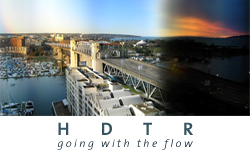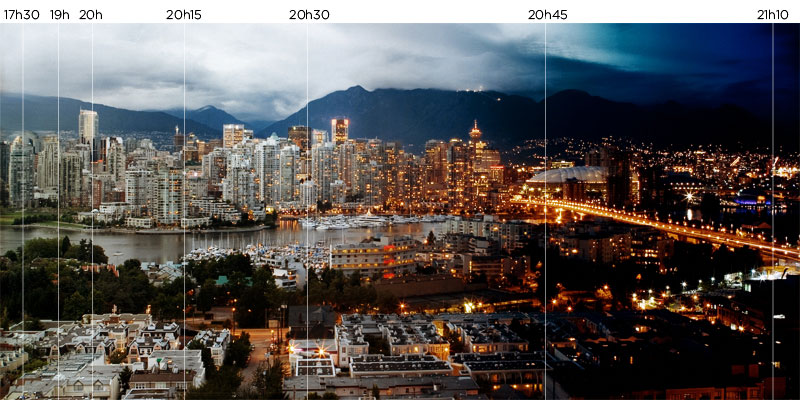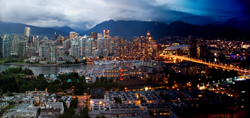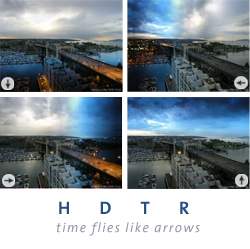HDTR | High Dynamic Time Range Images
capturing the flow of time in a single frame
contents
- what is HDTR?
- compositing time strips
- temporal blending
- HDTR images of Burrard Bridge
- direction of time flow
- extending the golden hour
- spatial blending
gallery
Browse my HDTR gallery
links
still photography and the passage of time
There are several ways to record the passage of time in a photograph, an inherently static medium.
One is to use long exposure, a process in which the shutter remains open for seconds, or even minutes. Moving objects appear as blurrs. The contrast between moving and still objects can be striking. In long exposure photography each part of the image records light from the entire exposure - time stacks on the photo like sheets of acetate.
Another way is to use a strobe light and illuminate the scene periodically, while the shutter is open. This is usually done in a dark field with a single moving subject, such as a dancer, person swinging a tennis racket or a dog lunging for its favourite toy. Rather than the motion blur seen in long exposures, instances are frozen sharply in an image.
The art of scanner photography takes a different approach to recording a time interval in a single image. A scanner is used as the recording medium, in place of film or a digital sensor. The motion of the scanner's head progressively samples the scene across the width of the frame and over a short period of time. One side of the image is digitized later than the other. The results are fascinating.
The method described here takes a new approach to depicting the passage of time. Images shown here are called High Dynamic Time Range (HDTR) images and are a composite of many photos taken over a long period of time, such as a day or even longer. Each part of the HDTR image is sampled from a different photo, either by column or row. Thus, the very left part of the HDTR image might show the scene from 7am and the very right from 8pm, capturing the variation in light across an entire day.
what is HDTR?
An HDTR image is an image in which multiple frames taken over an arbitrary time interval are blended together. The images in the time-lapse set are merged together by progressively sampling time-adjacent images horizontally or vertically. The difference between an HDTR image and a single-frame long exposure is that the contribution to any region of an HDTR image is primarily from a single image from the time-lapse set, rather than an average of all images.
Depending on how the blending is done, the result is an image in which a strip, row or column, is derived from a specific point in time. If a long exposure frame is a stack of acetates of time, an HDTR is a series of strips of time.
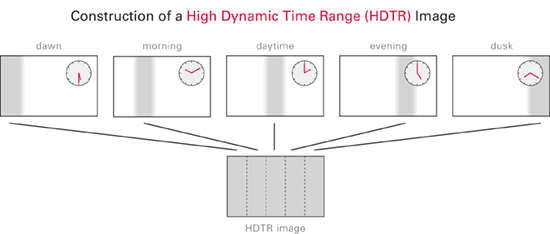
The strips can be blended in a variety of ways (see below), generally to limit banding artifacts and produce a smoother time gradient. In principle you can sample the images along any path, such as a diagonal line. You can also create a composite mosaic in which progressively spaced squares are sampled from the stack of time-lapsed images.
